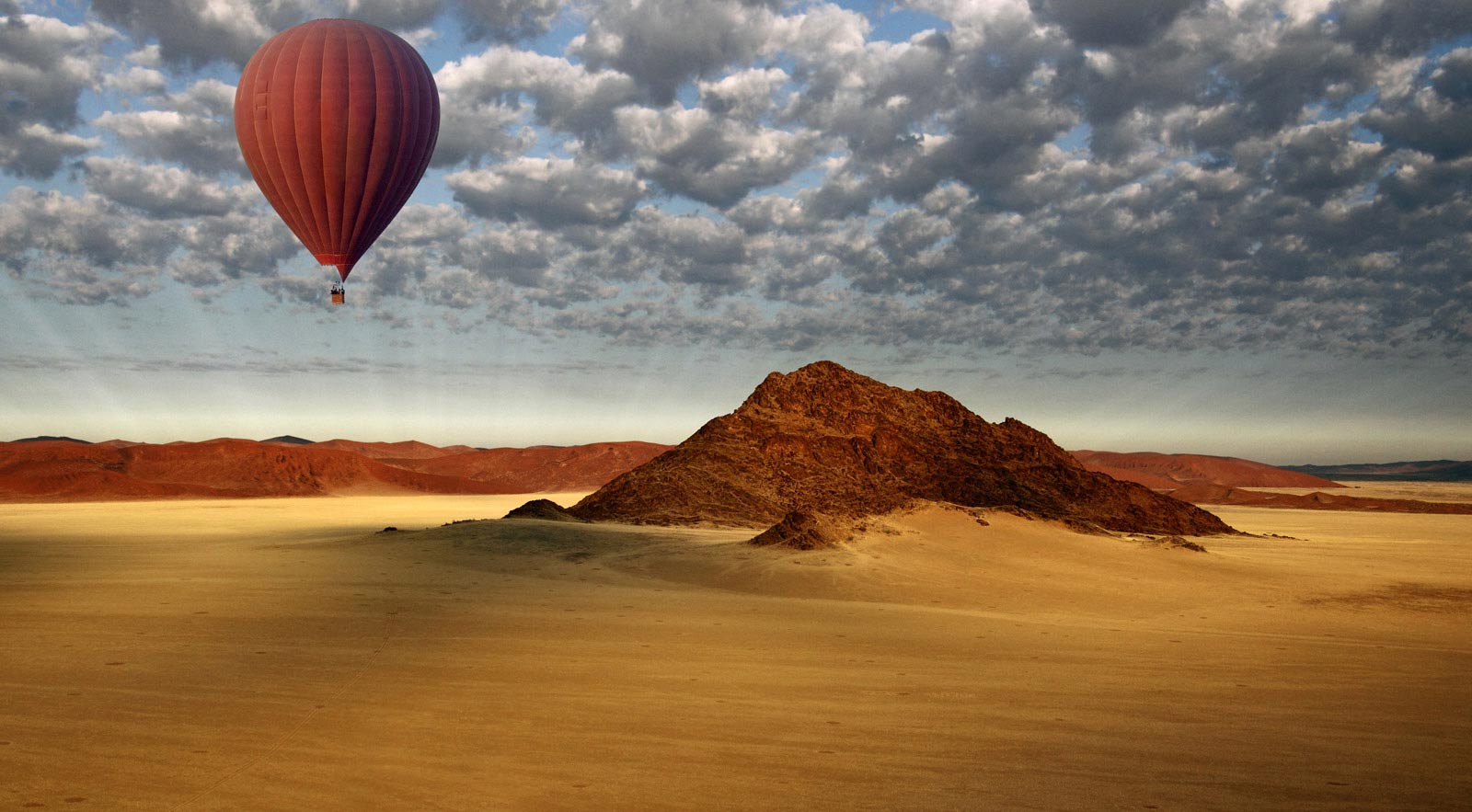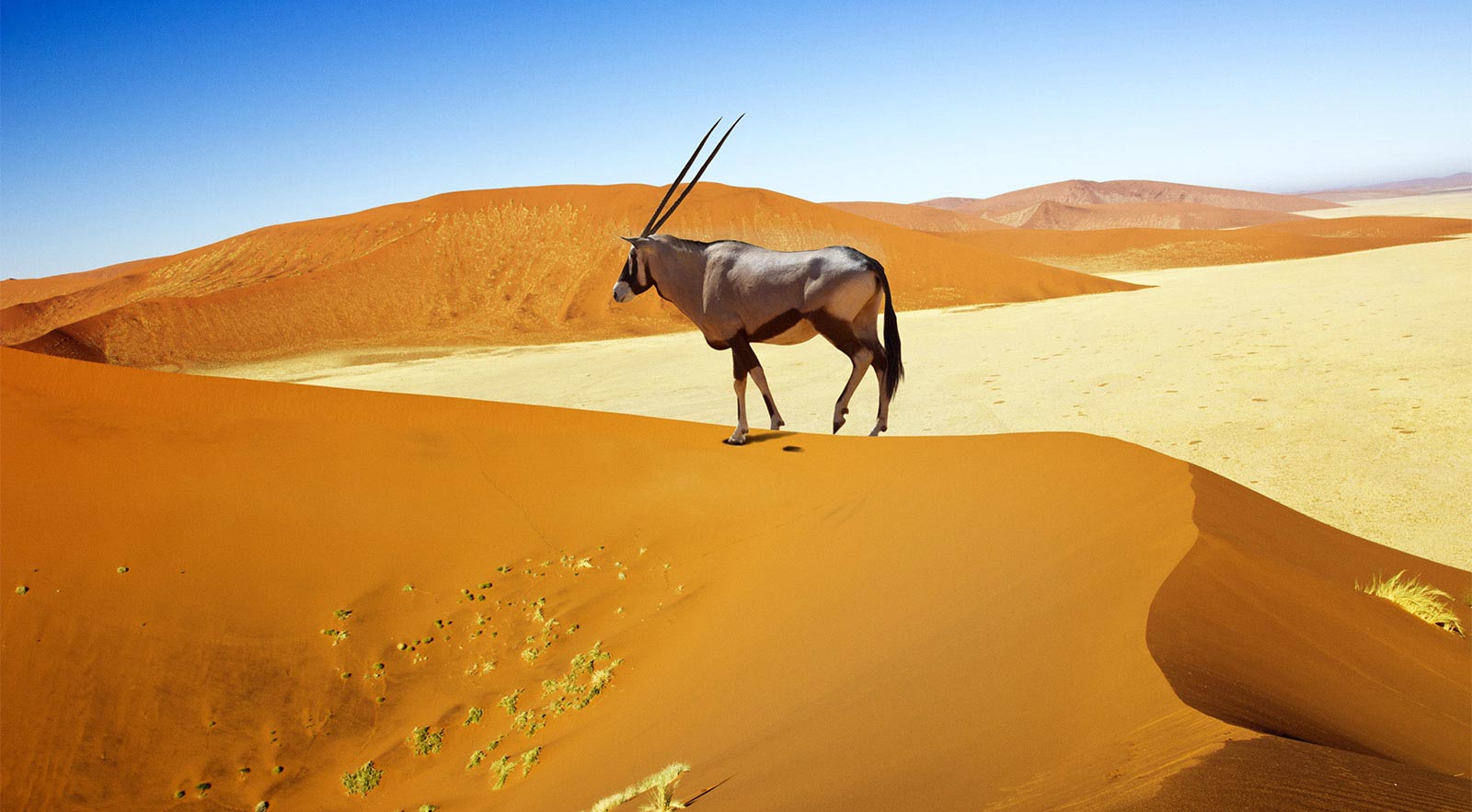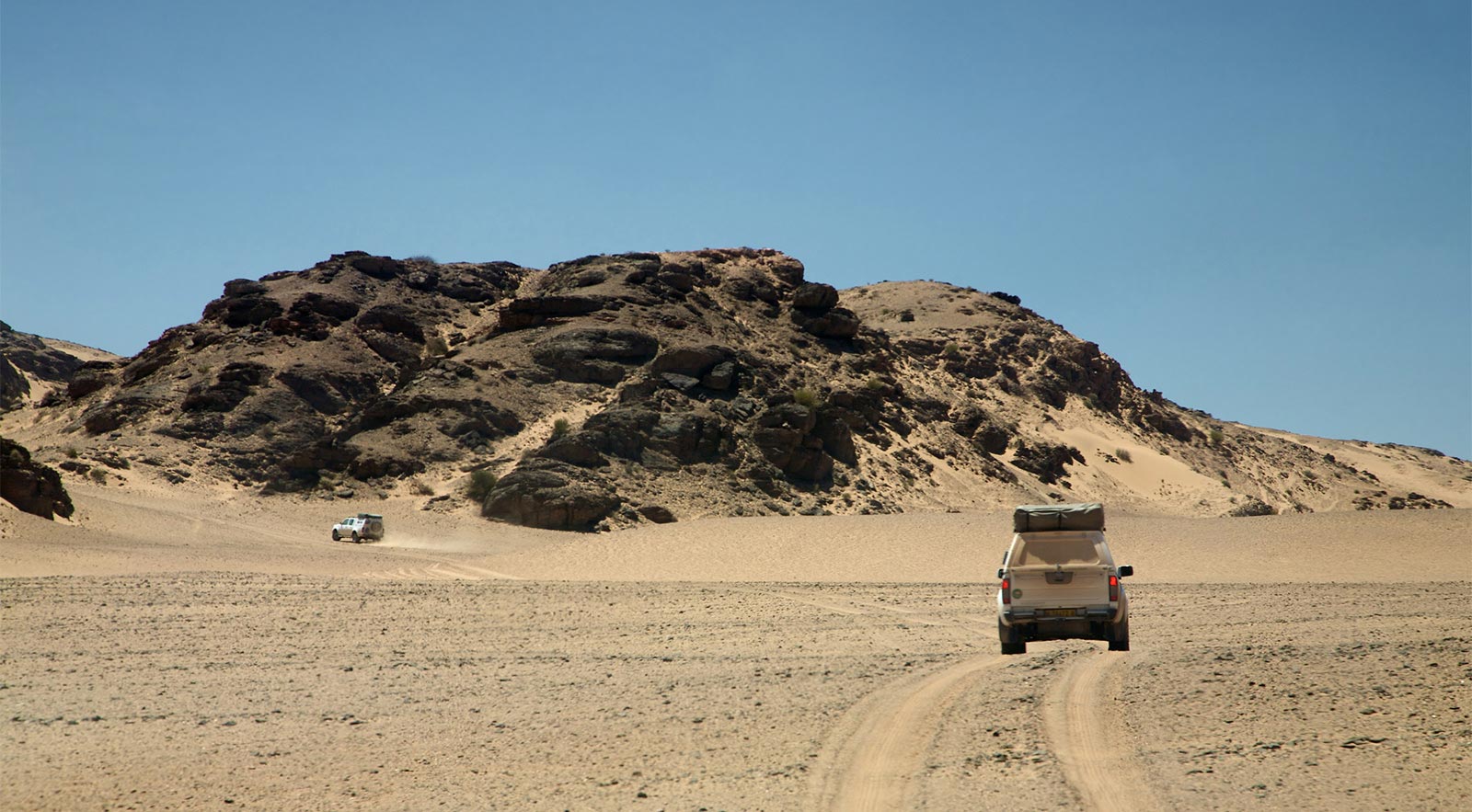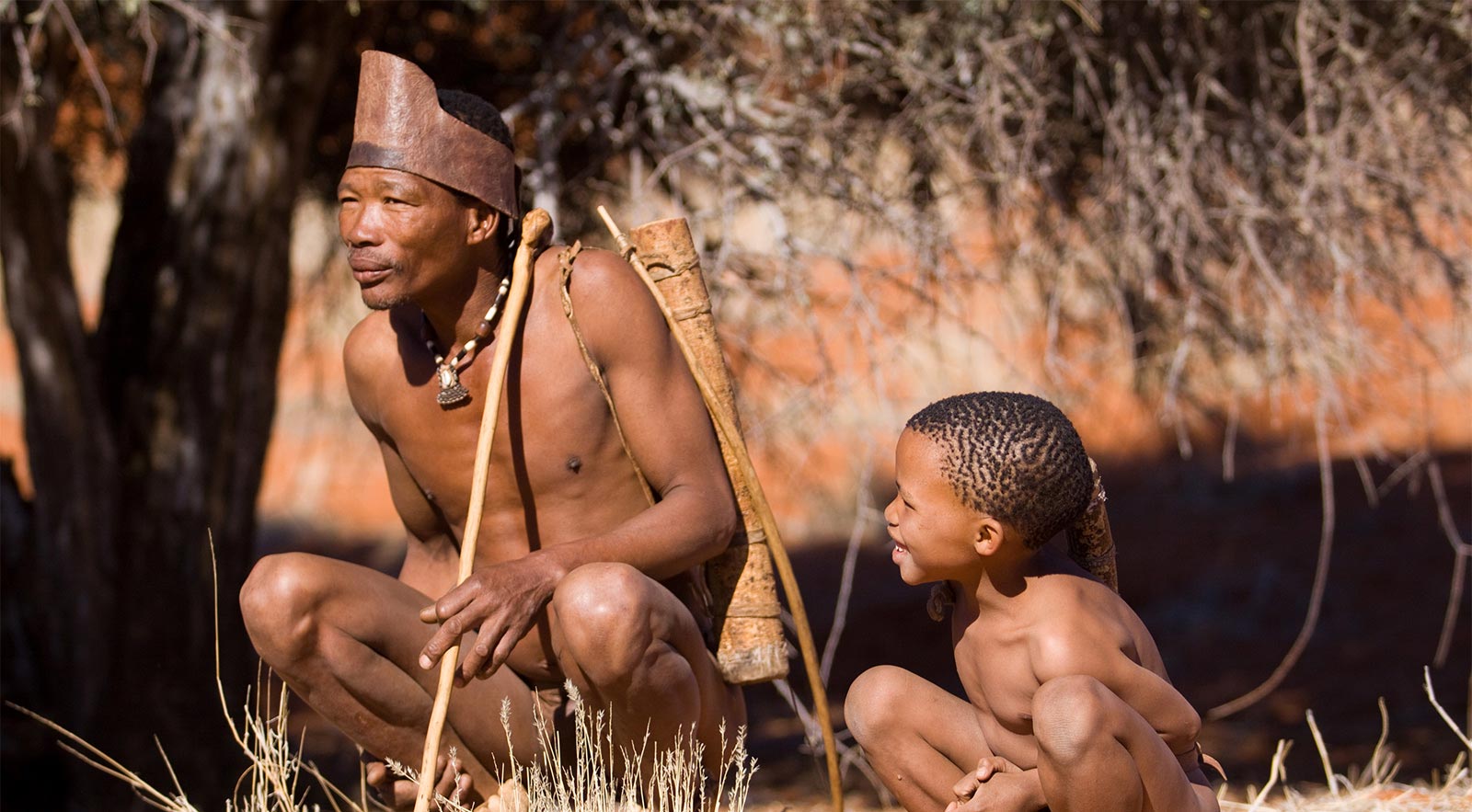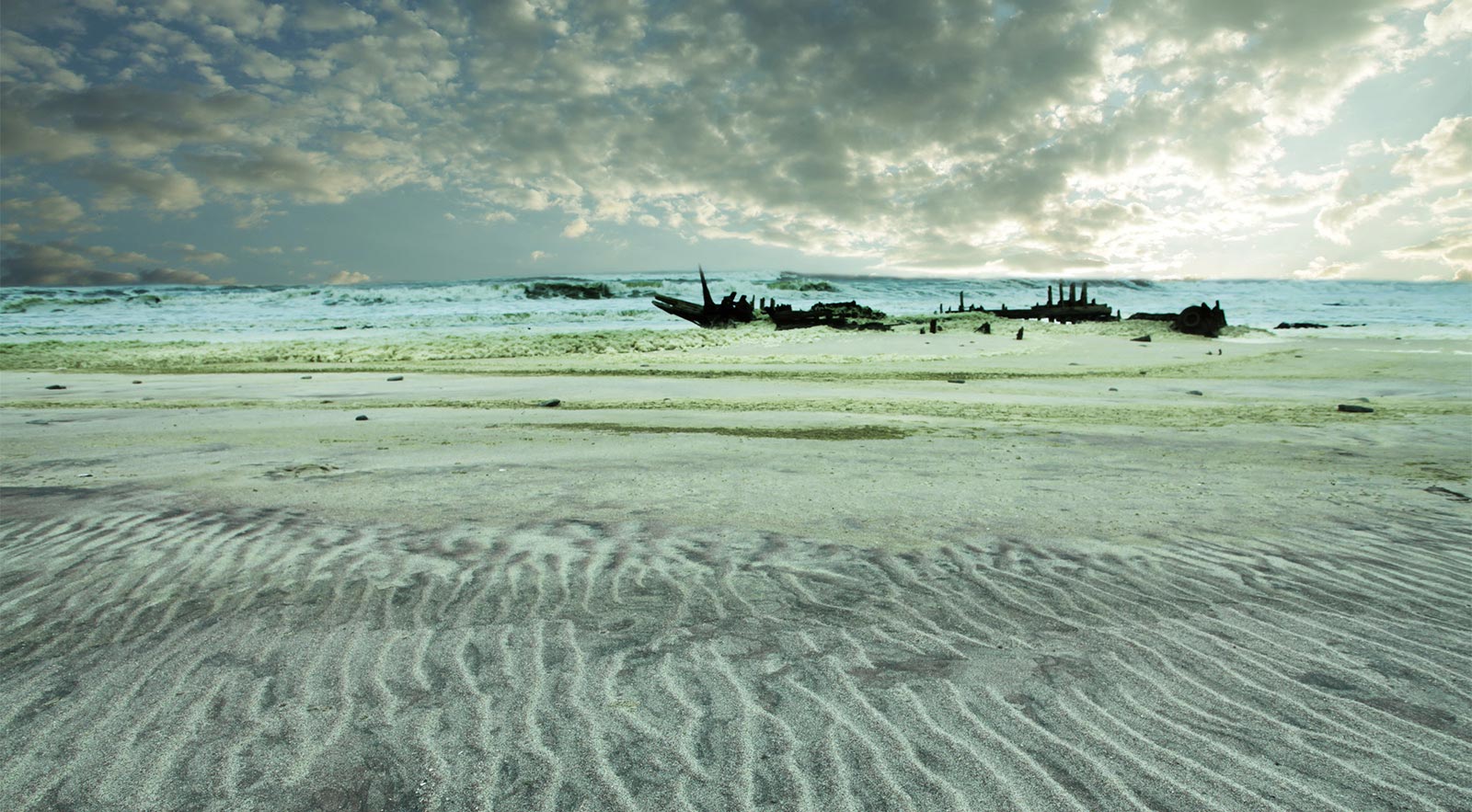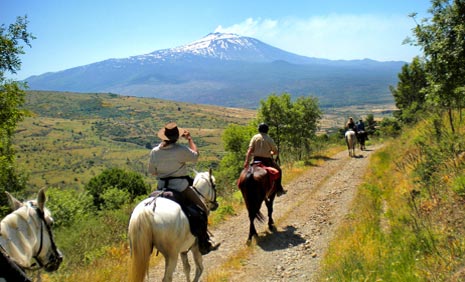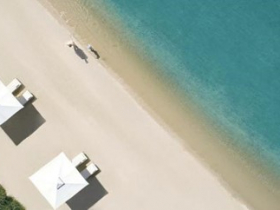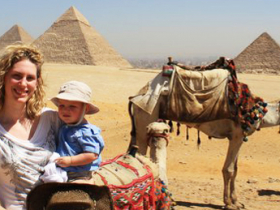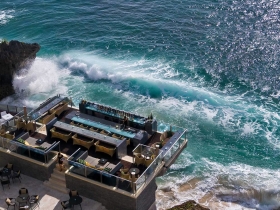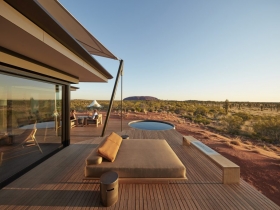Namibia is a landscape photographer’s dream, with wild and ever-changing vistas of shifting desert dunes, cracked red salt pans and the silhouettes of shipwrecks along the windswept skeleton coast. At once stunningly beautiful and hauntingly desolate, Namibia is nevertheless home to a host of specially adapted animals, such as the hardy desert elephant, rare desert lion, the beautiful Oryx and the endangered black rhino. Good roads and superb lodges mean comfort even in the country’s remotest corners.
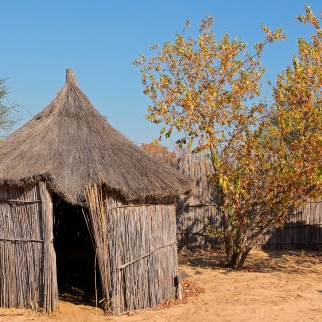
CAPRIVI STRIP
CAPRIVI STRIPIn the far northeast of the country, a thin strip of land connects Namibia to the great Zambezi River. A remote riverine habitat, this lesser-visited region offers a lush contrast, with five protected reserves home to astounding birdlife and elephant.
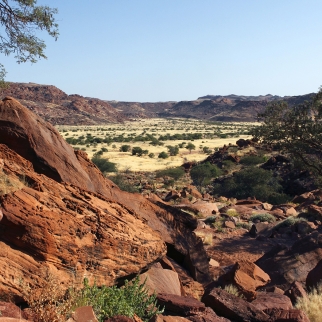
DAMARALAND
DAMARALANDA vast tract of wilderness littered with world-class bushman rock art sites, scenic Damaraland is home to Namibia’s famous desert elephant and rare black rhino. A petrified forest of 200,000 year old trees is just one of the geological gems found here.
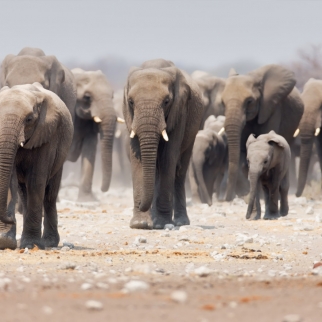
ETOSHA NATIONAL PARK
ETOSHA NATIONAL PARKOne of Africa’s best (and largest) game reserves, Etosha National Park is known for the large groups of game which congregate at its waterholes. Rare black rhino, large herds of elephant, and lion, cheetah and leopard are all found here.
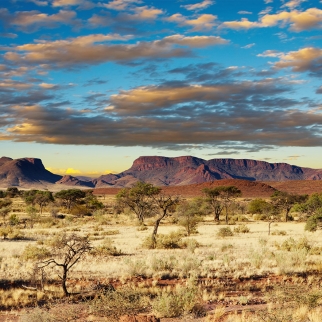
KALAHARI / BUSHMANLAND
KALAHARI / BUSHMANLANDMuch of the south and east of Namibia is covered by the Kalahari, a fossil desert which sustains a surprising variety of life. Home to the very ancient San people, a visit to Bushmanland in the northern Kalahari is the least impactful way to meet them.
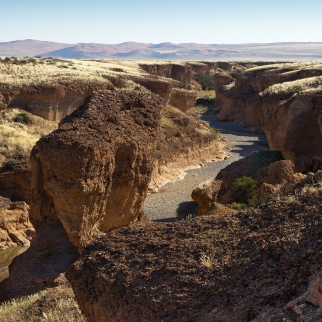
SESRIEM AND SOSSUSVLEI
SESRIEM AND SOSSUSVLEIThe iconic, towering sand dunes of Sossusvlei are just one part of Namib-Naukluft National Park, which is also home to Sesriem Canyon, carved by the Tsaucheb River. Sossusvlei’s charismatic red dunes are some of the tallest in the world.
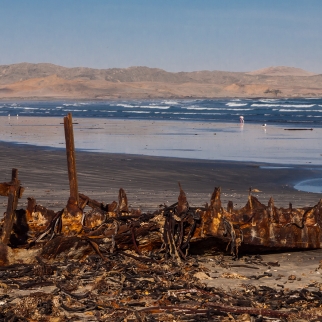
SKELETON COAST & KAOKOLAND
SKELETON COAST & KAOKOLANDNorth of Swakopmund, Namibia’s coastline becomes progressively wilder and more remote. The skeletons of whales and shipwrecks litter the often foggy shores. Light aircrafts provide access to the spectacularly unspoiled far north when the roads end.
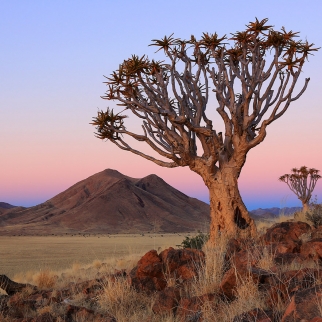
SOUTHERN NAMIBIA
SOUTHERN NAMIBIANamibia’s lesser-visited far south rewards the intrepid with yet more contrasts; the characterful German coastal town of Luderitz and the desert-encroached houses of Kolmanskop as well as spectacular Fish River Canyon, second largest on earth.
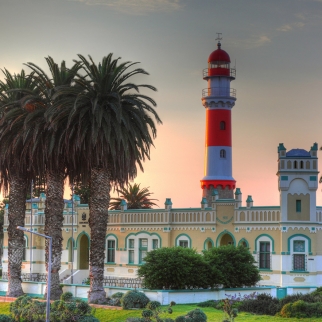
SWAKOPMUND
SWAKOPMUNDA sea-side resort from the days when Namibia was called German West Africa, colonial Swakopmund lies between the Atlantic Ocean and the dunes of the Namib Desert. Nearby Walvis Bay offers the chance to kayak with cape fur seals and dolphins.
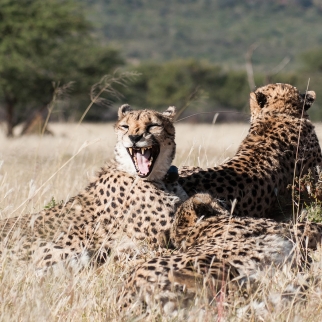
WINDHOEK & CENTRAL HIGHLANDS
WINDHOEK & CENTRAL HIGHLANDSNamibia’s capital has some pleasant museums but the real draw of this region is the red sandstone landscape of the Waterberg Plateau and the game farms in the rolling hills of the Central Highlands, which offer a chance to see rare animals up close.
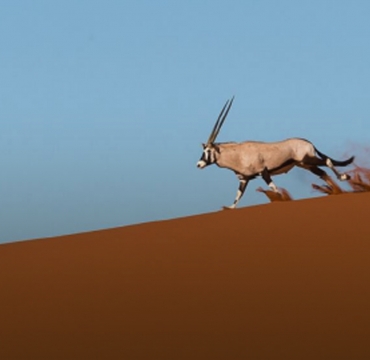
Desert Dune Safari – Namibia
This small group set-departure tour takes you through some of the most remote areas of the fascinating land of Namibia; areas which have been rarely explored by others. The dunes of Sossusvlei are not to be missed but you’ll also see the amazing marine life just off Swakopmund, the secluded and dramatic coastline of the Skeleton Coast littered with historic remnants of shipwrecks and the rugged and rocky landscape of Palmwag where the last free-roaming...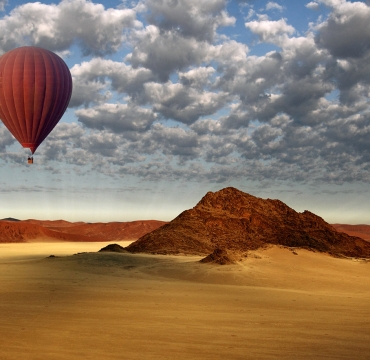
Diverse Namibia
This guided small group tour explores Namibia’s contrasts from the iconic Sossusvlei dunes to the Namib Desert and from the Atlantic coast to the ancient Damaraland plains and Etosha’s wildlife. Staying in small seasonal tented camps using comfortable dome tents with camp beds and ensuite bathrooms, travel between destinations by road with Namibia’s spectacular landscapes revealing themselves along the way.
Planning your trip
Most itineraries start in Windhoek, reached via Johannesburg, but if the Caprivi Strip is part of your itinerary it is easier to get there from Kasane in Botswana or even Victoria Falls.
Namibia is one of Africa’s easiest countries to get around, despite a lack of regional airports and scheduled domestic flights. Instead, there is a comprehensive network of light-aircraft routes making easy work of the country’s vast distances. Namibia is also an ideal self-drive destination – overland itineraries pass through arguably the world’s most incredible scenery and the well-maintained roads are safe and well-signed.
Quick country facts
- Recommended airlines
BA or South African Airways via Johannesburg or Air Namibia via Frankfurt. - Flight time
Around 14 -16 hours depending on the length of connection. - Time zone:
GMT +1 - Visa requirements:
No visa required for 90 day stay (UK passport)

Useful Links
Entry Requirements & safety
UK Foreign Office Travel Advisory
Jordanian Embassy London
Health & immunisations
NHS Scotland Fit for Travel
General country information
BBC Country Profile
Lonely Planet
WeatherWeather2Travel
BBC Weather
Accommodation and costs
Accommodation ranges from fairly basic government-run rest camps to ultra luxurious bush lodges with prices in a broad range. Namibia has something for most budgets and is a lot more cost-effective than Botswana.
How long to stay
With the time taken to get here, a week would be the minimum we’d recommend in Namibia, with two to three weeks an ideal length of stay. To see nearly everything you would need about a month. The average itinerary visits 3-5 different parts of the country, with 2-3 night stays in each. Namibia also makes a great combination with Botswana or South Africa.
Weather and when to go
Namibia can be visited all year round, with a dry and pleasant climate most of the time. Wildlife viewing is best in the dry season from June to October. Cool mornings and evenings give way to sunny, dry days which warm up as they go.
Between December and March, hot and humid days often result in afternoon thunderstorms. In this wet season, animals have no need of Etosha’s waterholes and disperse through the park making them harder to spot.
May is a lovely month, with moderate temperatures, low rainfall and a lush green landscape.
Namibia never gets crowded but accommodation is scarce. Lodges in July, August and September can fill up many months in advance so this is a holiday best planned 6 months or more ahead of time.
- JAN
- FEB
- MAR
- APR
- MAY
- JUN
- JUL
- AUG
- SEP
- OCT
- NOV
- DEC
- Best
- Good
- OK
- NOT ADVISED
